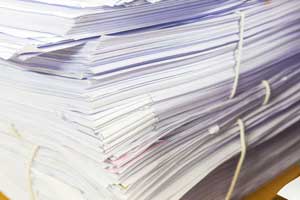Regulations, Labor Costs and the Recovery

Some claim that recent labor market regulations are to blame for a slow labor market recovery from the Great Recession. However, comparing this recovery to the one following the 2001 recession casts doubt on that claim, according to a recent Economic Synopses essay.
Vice President and Deputy Director of Research B. Ravikumar and Lin Shao, a recent graduate student at Washington University in St. Louis, compared labor costs per hour and per employed person following the 2007-09 recession with costs following the 2001 recession.1 They also compared the recent recovery with the long-run average for labor costs.
2001 Recession Recovery Vs. 2007-09 Recession Recovery
They found that labor cost per hour rose about 5 percent after the 2001 recession, but was essentially flat after the 2007-09 recession. The pattern was similar for labor cost per employed person.
Ravikumar and Shao also examined trends in total hours worked and total employed persons following the two recessions. They noted that “both measures grew faster after the 2007-09 recession than after the 2001 recession.” In particular, total hours worked grew 8 percent following the 2007-09 recession but only 5 percent after the 2001 recession. (For charts showing these trends in labor costs, hours worked and employed persons, see the Economic Synopses essay “Have Labor Costs Slowed the Recovery?”)
2007-09 Recession Recovery Vs. Long-Run Trends
The authors noted that growth in labor costs was less after the 2007-09 recession than the long-run average:
- From the first quarter of 1990 to the start of the Great Recession, labor costs per hour and per employed person averaged 1.52 percent and 1.22 percent growth per year, respectively.
- Since the second quarter of 2009, they have averaged 0.46 percent and 0.67 percent growth per year, respectively.
Conclusion
Ravikumar and Shao concluded by noting that, compared with the recovery from the 2001 recession, labor costs have increased slower and total hours worked and total employed persons have increased faster. “Hence, the aggregate data cast doubt on the proposition that an increase in labor costs due to labor market regulations has been the reason for the slow recovery from the 2007-09 recession.”
Notes and References
1 The authors calculated labor cost per hour by dividing real total labor compensation by total hours worked and calculated labor cost per employed person by dividing real total labor compensation by the total number of employed persons.
Additional Resources
- Economic Synopses: Have Labor Costs Slowed the Recovery?
- On the Economy: How Has Unemployment Rate Recovery Varied across the Country?
- On the Economy: How Many Unemployed People Are Jobless All Month?
Citation
ldquoRegulations, Labor Costs and the Recovery,rdquo St. Louis Fed On the Economy, July 7, 2016.
This blog offers commentary, analysis and data from our economists and experts. Views expressed are not necessarily those of the St. Louis Fed or Federal Reserve System.
Email Us
All other blog-related questions

